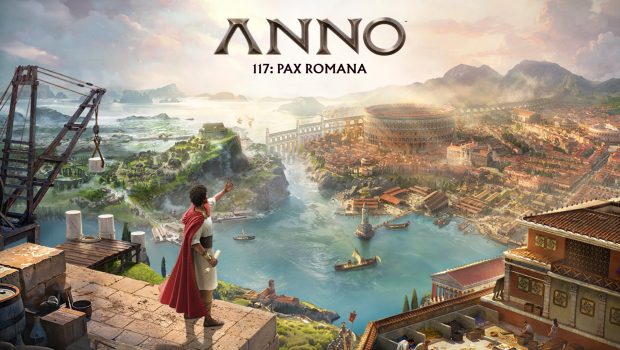Anno 117: Pax Romana PC Review – Caesar Solid
Summary: Masterful Roman-themed city-builder with deep gameplay systems for enthusiasts and an accessible story campaign for casuals.
4.5
Caesar Solid
Festina Lentē – make haste slowly.
I feel like the spirit of this Roman maxim captures the heart of Anno 117: Pax Romana, a thoughtfully paced city-building game filled with fun in-depth trading systems and strategic resource management that finely balances compelling complexity with welcome accessibility.
While the real-time strategy (RTS) genre is unlikely to be the first thing you associate with Ubisoft, its studio Ubisoft Mainz has diligently worked on its Anno series for 27 years, and its latest installment, focused on the historical setting of ancient Rome, deserves your attention.
Our in-depth preview already covers the basics of Anno 117: Pax Romana, but to summarize: You play as Rome’s latest rector provinciae – a governor or praetor of a Roman province in Latinum (Rome) or faraway Albion (Celtic) tasked with spreading the Empire’s influence through trade and wealth. As with Anno installments before it, Pax Romana offers a single-player narrative campaign and an ‘endless’ sandbox mode. I spent most of my time enjoying the story mode, which lets you choose to play from the perspective of either Marcus Naukratius or Marcia Tertia, two siblings who are initially tasked to restore the volcano-ravaged island of Juliana and revive its fertile plains, rolling fields and Azure waters for a new generation of Roman prosperity.
The campaign isn’t just set dressing, either – it does a great job of easing you into the core gameplay mechanics and the rich backdrop of the Roman Empire’s 200-year long golden age of imperialism without feeling like an extended tutorial. The characters and voice-work are interesting and their conflicts and challenges building the Empire’s latest region organically drive each stage of the campaign (along with optional objectives). The game is not tightly bound to historical authenticity, with a whimsical tone that glosses over certain aspects such as slavery, so the story may not land with everyone, but I thought the final release strikes a nice balance.
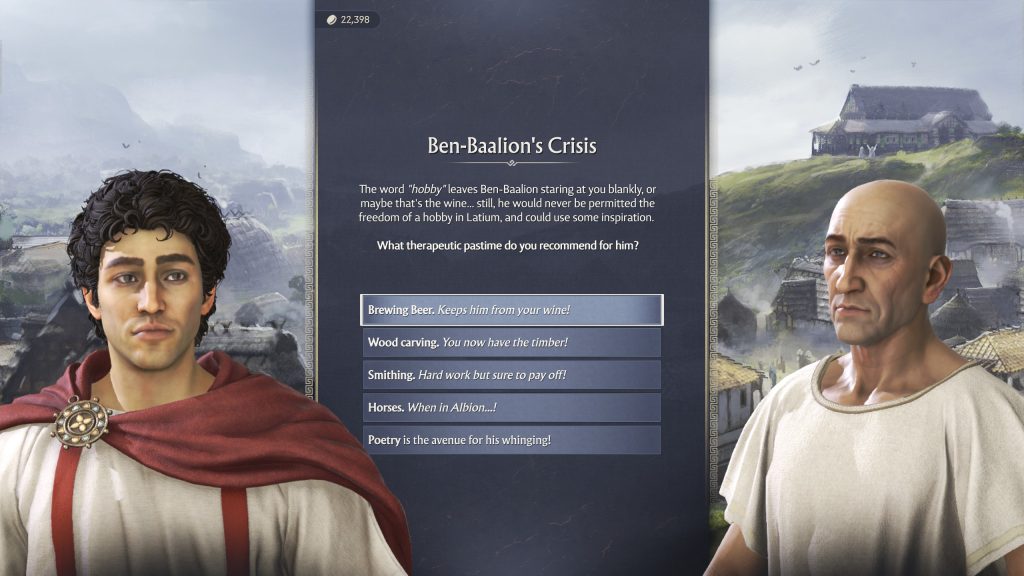
I also appreciated the many choices and changes that arise depending on your chosen governor, such as choosing to accept or refuse generous funding from a bully emperor, or forgiving or punishing the clumsiness of your local Liberti, or seeing the young and naive Marcus slowly grow to become a mature and tactical governor. These choices also have gameplay impacts, such as a happier populi (kindness) or greater prestige (cruelty). Of course, if you are just interested in the city-building itself, most of the character conversations are optional.
The core gameplay loop of Pax Romana is all about economy. Your theatre of war isn’t the campus, but the trading post, which acts as your starting point on every new island in both the campaign and endless modes. The aim is to increase your region’s working population and production centers to get cities bustling and trade flowing by acquiring essential resources like wood, tiles, wattle and iron, which require building worksites and warehouses to extract and store them. Then you need to attract the working class Liberati by building houses and roads to establish a productive and working logistics network, before scaling things up carefully without overspending or overproducing.
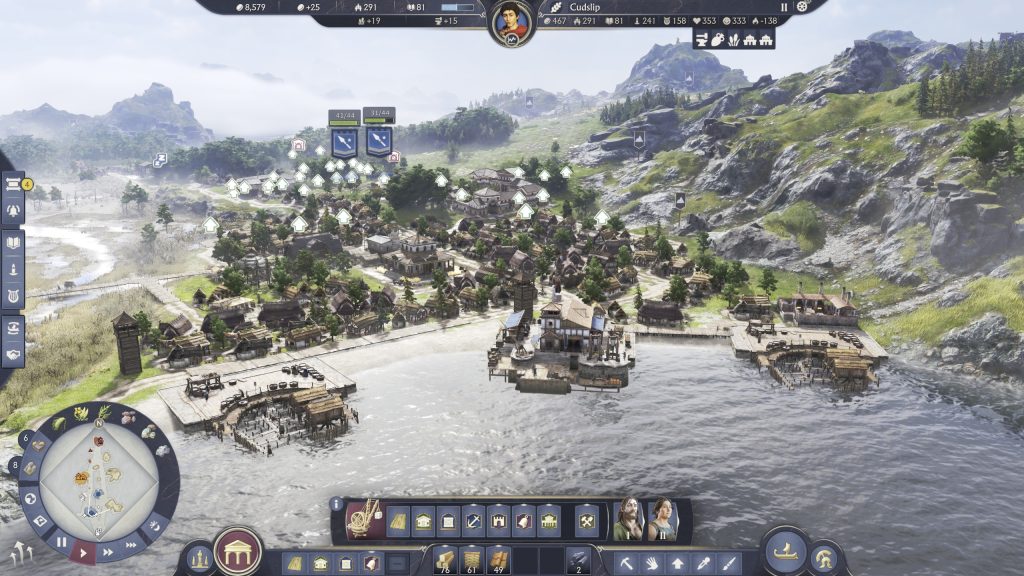
But wait! You also need to keep the Liberati happy, entertained and spending, so that means investment in building community sites like taverns, theatres, and marketplaces, and ornamental objects like statues, flower-beds, trees and more. They also need food and fashion, which up the ante by requiring arable land and work facilities to grow, harvest and provide the product. Do that right, and you can begin to attract higher class citizens like Smiths, Mercators, Aldermen and Nobles to your city, and open up additional building options.
But you can’t just plop your residential and working districts anywhere. Buildings in Anno 117 have a radius that signifies whether its unique effects benefit the surrounding estates; for example, placing your taverns and governor’s residence close to your houses ensures the happiness and prestige bonuses they provide are maximized, and allow you to upgrade citizens to the next tier. On the flipside, building certain worksites such as charcoal mines is best done far from city centers, as anything within its radius will incur negative effects due to its pollution.

Once your cities are thriving with activity, I found the real appeal of the formula kicks in. Seeing your humble colony run with olive-oiled efficiency is addictive, as is bringing your vision to life aesthetically. I’ve never been a particularly creative gamer, but Pax Romana’s replacement tool was a godsend, as it allows for moving buildings and roads (with small costs for the latter) quickly, and comes in handy as your settlement naturally grows in size and complexity. Zooming in and out to admire your trading network also reveals an impressive level of detail and personality; from toga-wearing citizens frolicking in your temples to hard-working Liberati farming, smithing, carving and lugging resources to your ships to be carried to other islands.
It didn’t take me long to find the blend of city-building, long-term strategic planning, scripted story quests and naval exploration quite addictive. The early story sees Marcus sail up and down the various islands in the region to meet Emperor Lucius for dinner, play errand boy to find his wayward daughter Diana, and gather raw resources to help the Emperor prepare for a big celebration at his estate. Once you get a hang of the basic gameplay systems, the narrative stakes escalate and see Marcus face a greater challenge in Albion, where he has to tame the foreign Celtic region under stricter Roman rule; here, you can choose to build the wayward region as a classic Roman settlement, or one that resembles Celtic rituals and traditions.
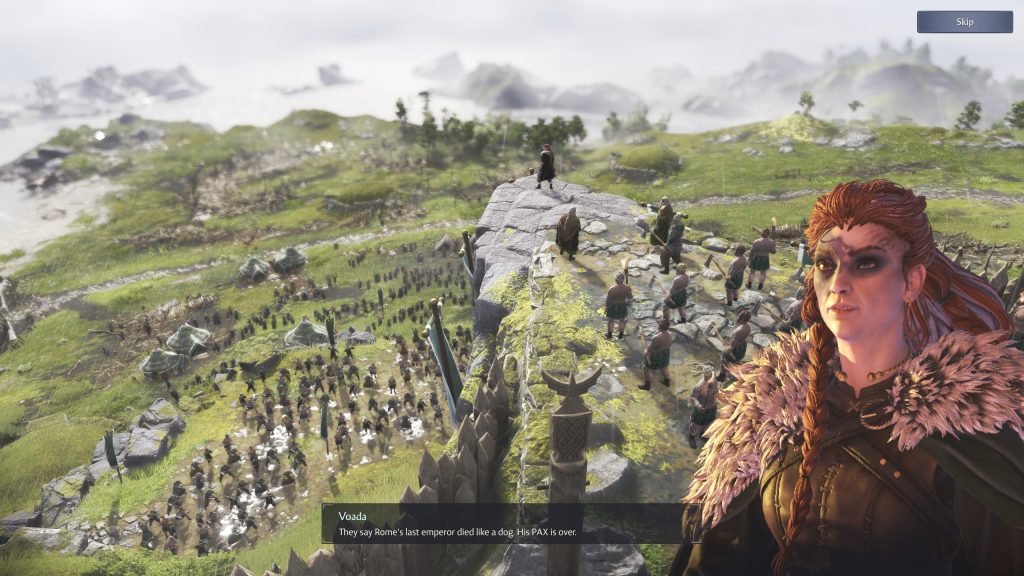
This is the coolest part of Pax Romana, as I can’t recall many recent games that let you choose to blend Roman and Celtic settlements/biomes. Building and citizen types, as well as resources, benefits and visual style vary depending on the path you choose; Albion, for example, centers much of its production like cockles and eel fishing in marshland terrain, and demands more investment in standing military and defenses, while opting to Romanize your outpost brings grand architecture and engineering marvels like temples and aqueducts to your cities.
The city-building makes up the meat of Anno 117, but reinforcing its considerable gameplay systems are its systems for religion, diplomacy and research menu. You have a choice of which Roman god to worship for certain bonuses (I picked Ceres because I’m all about the abundance of Garum), a menu to build trade partnerships or negotiate with CPU allies and rivals of varying personalities and playstyles (or bribe them), and a sizeable research tree which allows you to tailor your focus based around Economic, Civic, or Military discoveries. You can unlock entire new buildings, bonus effects for existing ones, and, crucially, new military units, as this game offers combat, too – just don’t expect it to be the main focus.
Both ground and naval battles play out in real-time and are visually if not mechanically appealing, mostly coming down to the paper-rock-scissors system of picking the right close-quarters, ranged and siege units (clustered together in groups rather than as individual soldiers on the field) to take out your opponent before they cause too much chaos. I much preferred playing as diplomatically as possible and investing in defense (such as walls and towers) as training military units severely reduces your production workforce, which I struggled with managing in the mid-game. Some of the bigger, late-game battles where you have enough resources to attack with both fleet and land armies do feel appropriately epic, however!
I found the full game’s technical performance improved a lot since my first preview, with my mid-range Ryzen 3600 / RTX 3060 Ti/16 GB RAM gaming rig, well below the recommended specs, able to play Pax Romana at 1440p at 60 frames-per second with DLSS set to Balanced without hiccups aside from the occasional hard freeze when trying to exit the game. The image quality and stability noticeably improved after the day one patch, which is great news considering the impressive level of detail the average game round simulates, as your region expands from humble colony to sprawling cities encompassing multiple islands.

As for the visual presentation, I really liked Anno 117’s semi-realistic artstyle, though main story cutscenes mostly consist of characters and NPCs standing around as talking portraits, with the occasional cinematic cutscene for major chapter transitions. There is a bit of uncanny valley going on with the expressive nature and off lip-syncing of Marcus and Marcia, but the production value and level of simulated detail in the game world is definitely a step above many other titles in the genre. I especially like the little quips and historical references your citizen portraits make whenever hovering over housing and building site menus. It’s the little things!
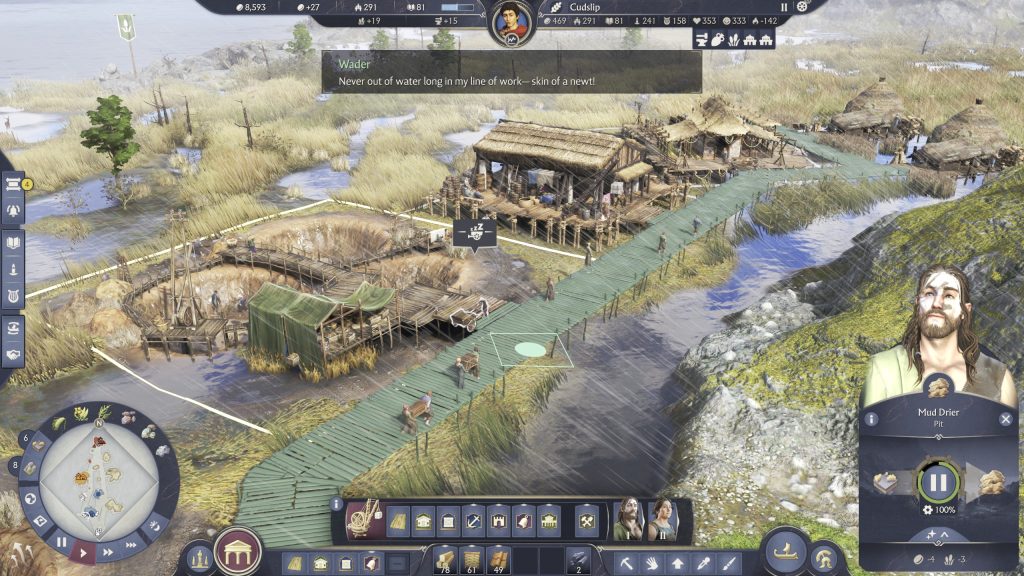
The Final Verdict
I’ve barely scratched the surface of conveying the depth of Anno 117: Pax Romana’s gameplay experience and intricate city-building systems, but I can confidently say it is a rewarding, fun and strategic game that will appease both casual and hardcore fans of the genre – just make sure you have many hours to spare, because learning its ins and outs definitely makes the time fly by. Highly recommended.


